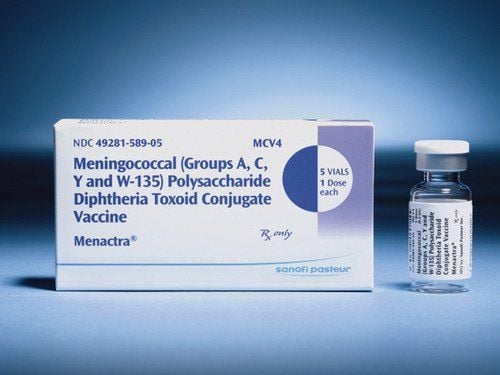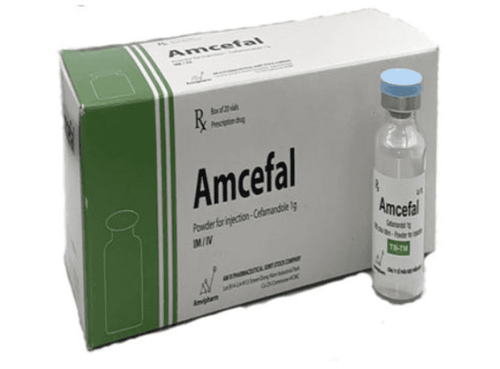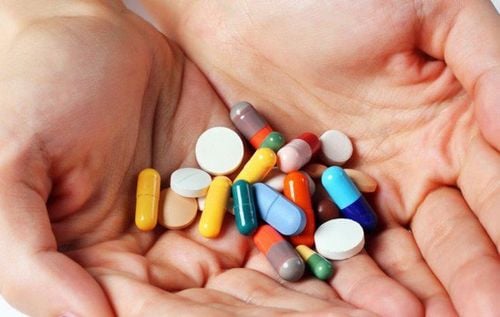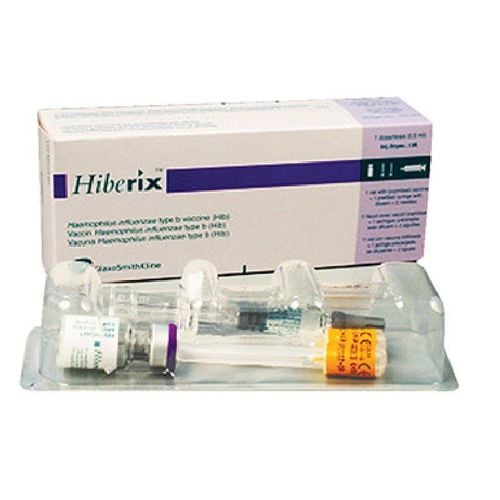This is an automatically translated article.
Oxacillin 500mg medicine contains the active ingredient Oxacillin - an antibiotic of the Penicillin group. The drug is indicated in cases of upper and lower respiratory tract infections, dermatitis, urinary tract inflammation or osteoarthritis... Let's learn about the uses and notes when using Oxacillin through the article below. this.
1. Uses of Oxacillin 500mg
1.1. Indications for use of Oxacillin 500mg Oxacillin 500mg contains the active ingredient Oxacillin - an antibiotic belonging to the Penicillin group. The drug is indicated in cases of staphylococcal infections that are resistant to Benzyl penicillin and sensitive to Oxacillin. Specifically as follows:
Severe infections: endocarditis, osteomyelitis, meningitis, sepsis or related to endovascular catheterization; Upper and lower respiratory tract infections; Infection of skin structures and causes inflammation, infected burns; Osteoarthritis; Urinary tract infections . 1.2. Pharmacodynamics Oxacillin belongs to the group of synthetic penicillins that are not inactivated by penicillinases. The drug's mechanism of action is to inhibit bacterial cell wall synthesis by binding to one or more Penicillin-binding proteins (PBPs); Therefore, the drug helps to inhibit the final transpeptidation step of peptodoglycan synthesis in the bacterial cell wall, thereby inhibiting cell biosynthesis. Finally, pathogenic bacteria are lysed by enzymes that break down the cell wall.
Oxacillin is active against many penicillinase-producing strains of S. epidermidis and Staphylococcus that are resistant to most currently available penicillins. The bacterial inhibitory concentration of the drug is 0.4 - 6 mcg/ml.
However, many strains of Staphylococcus aureus are now resistant to the drug. Therefore, when starting treatment for infections caused by staphylococci that are still resistant to Oxacillin, it is recommended to combine the drug with Vancomycin to help prevent the risk of resistance to Oxacillin strains acquired in the hospital or in the community.
1.3. Pharmacokinetics Absorption: Oxacillin is rapidly but incompletely absorbed from the gastrointestinal tract (approximately 33%). Food reduces the extent and rate of absorption of the drug. At a dose of 500 mg, maximum plasma concentrations of Oxacillin are approximately 3 to 4 mcg/mL after approximately 0.5 - 2 hours of oral administration and about 7-10 mcg/mL after approximately 30 minutes of intramuscular injection. Distribution: Oxacillin is strongly bound to plasma proteins (about 90%) and mainly to albumin. The drug is widely distributed throughout the body, including in the fetus, amniotic fluid, pleural fluid, breast milk and to a small extent in aqueous humor and cerebrospinal fluid. Metabolism: The drug is partially metabolised to an inactive metabolite. Elimination: Oxacillin is eliminated unchanged and also as metabolites, mainly excreted in the urine (a small part is excreted in the feces). The half-life of the drug in serum ranges from 0.3 to 0.8 hours in patients with normal renal function and is generally longer in patients with impaired renal function.
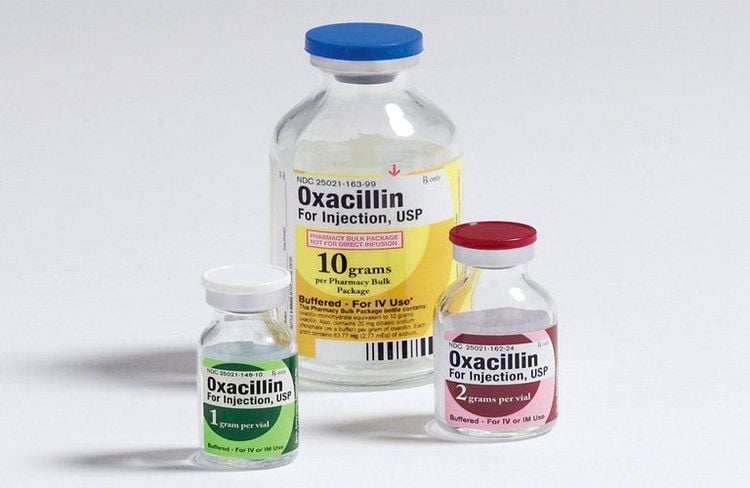
Oxacillin là thuốc kháng sinh thuộc nhóm Penicillin
2. Dosage of Oxacillin
Dosage of Oxacillin 250mg, 500mg depends on the age and condition of the patient. Specifically as follows:
Dosage of Oxacillin in adults:
Common infections: In mild to moderate severity, take orally at a dose of 500mg - 1g/time, repeat after 4-6 hours. The maximum oral dose is 6 g/day. Administer by infusion (intramuscular, slow intravenous) at a dose of 250 - 500 mg / time repeated after 4-6 hours. For severe infections, use intramuscular or intravenous injection at a dose of 1g/time, repeat after 4-6 hours; Endocarditis: Administer intravenously at a dose of 2 g / time, repeat after 4 hours, the duration of drug use is 4-6 weeks. Can be used in combination with Gentamicin intravenously or intramuscularly (dose 1 mg/kg body weight every 8 hours) during the first 3-5 days of treatment with Oxacillin; Osteomyelitis, joint infection: Use a dose of 1.5-2g intravenously every 4-6 hours; Meningitis: Administer 1.5-2g intravenously every 4 hours; Skin or soft tissue infections: For surgical site infections 2g intravenously every 6 hours. For soft tissue and skin infections, necrotic infections, 1 to 2 g IV every 4 hours is recommended. Dosage of Oxacillin in children:
Common infections: Neonates and premature infants are administered intramuscularly or intravenously at a dose of 6.25 mg/kg body weight, every 6 hours. Children weighing less than 40 kg orally at a dose of 12.5 - 25 mg/kg body weight/time and repeated every 6 hours or administered intramuscularly, intravenously 12.5 mg/kg body weight/time and repeated again every 6 hours. Children weighing 40kg or more take the same dose as adults; Bacterial meningitis : Administer intramuscularly or intravenously according to the following table:
| Trẻ dưới 1 tuần tuổi | Trẻ trên 1 tuần tuổi | |
| Cân nặng < 2kg | Dùng liều 25 – 50mg/kg cân nặng, cách mỗi 12 giờ | Dùng liều 50mg/kg cân nặng, cách mỗi 8 giờ |
| Cân nặng > 2kg | Dùng liều 50mg/kg cân nặng, cách mỗi 8 giờ | Dùng liều 50mg/kg cân nặng, cách mỗi 6 giờ |
Endocarditis: Administer intravenously at a dose of 30-50 mg/kg body weight every 4-6 hours, the duration of drug treatment is about 6 weeks. It is possible to combine treatment with gentamicin intravenously or intramuscularly at a dose of 3 mg/kg body weight/day during the first 3-5 days of treatment with Oxacillin; Pneumonia due to infection: Neonates and over 3 months of age receive 150-200 mg/kg/day intravenously or intramuscularly every 6-8 hours. The maximum dose is 12 g/day; Soft tissue or skin infections: For common infections, the dose is 25-37.5 mg/kg every 6 hours. For necrotic infections 50 mg/kg IV every 6 hours. - For other subjects: In case the creatinine clearance is less than 10 ml/min, a low dose of the usual dose should be used.

Thuốc Oxacillin cần được tiêm theo đúng chỉ định của bác sĩ
3. Side effects when using the drug Oxacillin
Some possible side effects when using Oxacillin are as follows:
Common side effects: Nausea, allergic reactions, diarrhea, fever, thrombophlebitis; Uncommon side effects: Leukopenia and thrombocytopenia, eosinophilia and liver enzymes, urticaria; Rare side effects: Pseudomembranous colitis, anaphylaxis, cholestatic jaundice, interstitial nephritis, agranulocytosis, renal interstitial damage (reversible with timely discontinuation of the drug). Side effects of unspecified frequency: Bone marrow depression, stomatitis, hepatotoxicity, convulsions, neurotoxic reactions, abnormal serum alkaline phosphatase levels, hematuria, acute renal failure, proteinuria severe hypokalemia.
4. Note when using
4.1. Contraindications Oxacillin is contraindicated in cases of hypersensitivity to any penicillin or cephalosporin antibiotic.
4.2. Notes on use General note:
Oxacillin can cause allergic reactions similar to other Beta - lactam drugs. Therefore, before treatment, the patient should be checked for a history of hypersensitivity to Penicillin, Cephalosporin or other drugs; Oxacillin can affect the kidneys, liver and blood, so it is necessary to check the function before and periodically during treatment; Prolonged treatment with Oxacillin may lead to fungal or bacterial superinfection; Treatment with oral Oxacillin may cause diarrhea caused by Clostridium difficile, especially in those with a history of infection with this bacterium. Caution in pregnant women:
Oxacillin belongs to group B of the FDA classification of drugs for use in pregnant women; The drug has the ability to cross the placenta. Although there are currently no studies to confirm the safety of oxacillin when used in pregnant women, the drug should only be used when absolutely necessary and with a doctor's prescription. Note in lactating women:
The drug crosses the breast milk barrier and is not known to harm the infant. Therefore, consideration should be given to the use of the drug in lactating women, it is best to stop breastfeeding while taking the drug. Note in the elderly:
Elderly people often have impaired organ function and have many underlying diseases. Therefore, when prescribing Oxacillin in this subject, it is necessary to start at a lower dose than normal people, monitor liver and kidney function during treatment. Note in children:
Liver and kidney function in children is not complete, so oxacillin may not be completely eliminated, thereby leading to abnormal increase in blood levels. Blood levels of the drug should be regularly monitored so that appropriate dose adjustments can be made.

Người bệnh nên ghi nhớ những lưu ý của bác sĩ khi sử dụng thuốc Oxacillin
5. Drug interactions
Oxacillin may interact with the following drugs:
Concurrent use of Oxacillin with other bacteriostatic antibiotics such as tetracycline reduces the effect of the drug; Probenecid increases the serum concentration of Oxacillin; Oxacillin slows down the elimination of Methotrexate from the body.; Oxacillin reduces the effect of live attenuated vaccines (including typhoid, cholera, tuberculosis vaccines) and probiotics such as Lactobacillus due to pharmacodynamic antagonism; Acemetacin increases the serum concentration of Oxacillin. Anticoagulant effect of vitamin K antagonists is increased when used in combination with Oxacillin; The hypokalemic effect of Dichlorphenamide is increased when used in combination with Oxacillin; The therapeutic effect of Picosulfate is reduced when used in combination with Oxacillin; Food-drug interactions: The absorption of Oxacillin is reduced when taken with food. Therefore, the drug should be taken on an empty stomach (taken 1 hour before meals or 2 hours after meals) to increase the effectiveness of drug absorption. In summary, Oxacillin is indicated in cases of bacterial infections. Drugs have many side effects and interactions, so you need to follow the instructions of your treating doctor to ensure safety.
Please dial HOTLINE for more information or register for an appointment HERE. Download MyVinmec app to make appointments faster and to manage your bookings easily.




